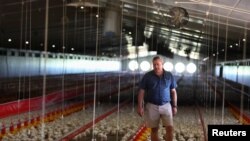Nedbank said that costs to the economy in lost production due to power shortfalls would escalate exponentially to about 408 million rand ($22.32 million) per day at stage 4, and more than double at stage 6, with the brunt falling on SMEs.
Agriculture, manufacturing, restaurants, food services, retail supply chains and tourism are more exposed and will incur losses and higher operational costs for running generators, it added.
"Higher stages of load-shedding [power cuts] towards the end of the calendar year presented a challenge for small and medium-sized enterprises (SMEs) and sole proprietors, in particular," FirstRand, the country's biggest bank by market capitalization, said this week.
Standard Bank, the largest lender by assets, also said South African GDP growth was expected to be hampered by the daily power cuts.
Rating agency Fitch said on Friday persistent blackouts have "caused significant disruption and reduced business confidence, currently at a two-year low."
This adds to existing asset quality and profitability pressures for local lenders, who are otherwise said to be among the most capitalized banks in the continent.
From the second half of last year, debt-laden Eskom's power plants have frequently broken down, creating a headache for President Cyril Ramaphosa's government and the country's businesses over how to keep the lights on.









